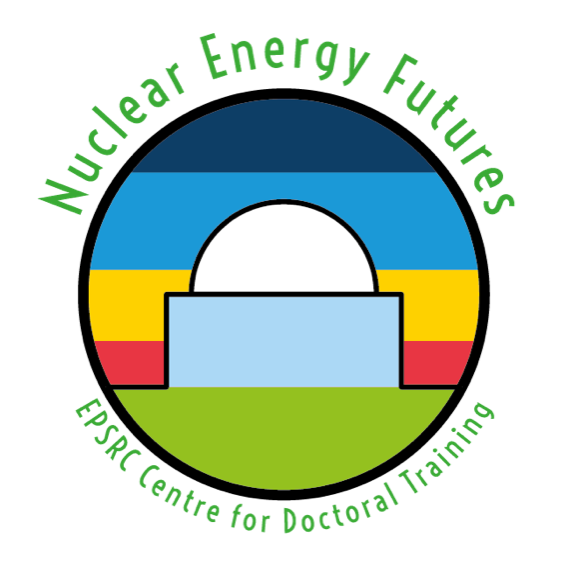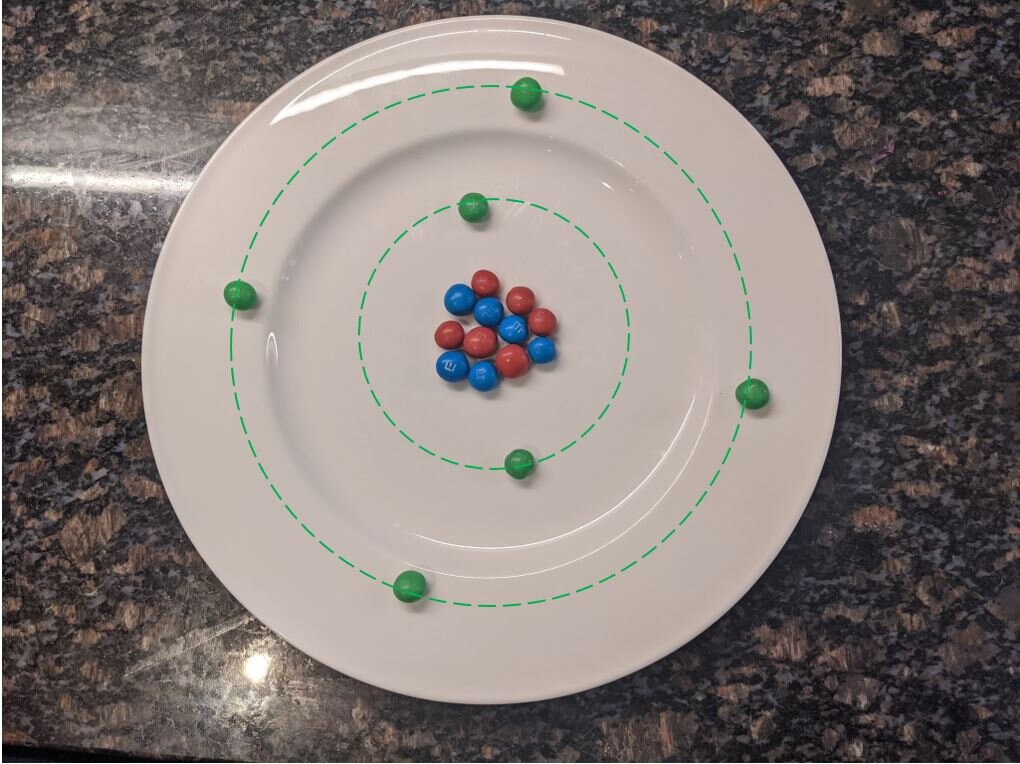Make your own atom!
Follow the instructions below to have a go at making your own atom, molecules and ions!
Don’t forget to send us your name, age and a picture of your atom to nuclearenergyfuturescdt@gmail.com
Making Your Own Atom:
Step 1: find a base
The easiest way to construct the atom is to start with a circular base, from here we can create circular shells and a circular nucleus in the centre!
Some circular objects you could use are plates and paper plates, or paper or cardboard cut into a circle!
Step 2: find your protons, neutrons and electrons
Open a pack of smarties (or m&m’s) and split them into different colours - pick three colours and decide which ones will be protons, neutrons or electrons.
If you don’t have smarties or m&m’s you could use buttons or pom poms or anything small and colourful!
Step 3: Build the nucleus
Decide which atom you would like to build (some suggestions are below). Place the correct number of protons and neutrons in the centre of your base.
A carbon nucleus with 6 protons and 6 neutrons
Step 4: Build the electron shells
Now arrange the electrons in shells around the nucleus - make sure to add the correct number in each shell and make sure each shell is the same distance away from the nucleus
A complete carbon atom, with 6 orbiting electrons in 2 shells
A more complex silicon atom, with 14 protons, neutrons and electrons in 3 bands
Step 5: Don’t forget to send us your photos!
If you’re feeling adventurous, why not try making an ion or a molecule! Or why not a bigger atom? You can use the pictures below for inspiration!
Don’t forget to eat the smarties after the photograph!
Enjoyed this? Looking for more activities? How about these:
A School Trip to A Nuclear Power Plant
An Escape Room Adventure
During a tour of a nuclear power plant you suddenly find yourself completely lost and completely alone. What would you do? Most importantly, would you make it out alive?
In this book you take control.
Working from the ground up you will learn how nuclear power provides electricity for your home. Face to face with highly radioactive nuclear fuel waste - you will learn how to reduce your radiation dose.
Build A Reactor
The following packages introduces the basics of what goes into a nuclear reactor and why. Two information sheets provide a brief view of both Fission and Fusion power and the materials that go into these, with a short quiz to review. You can then build your own reactor with different materials to help give an idea of what is done in the industry today.
Powerline
How much power does your toaster consume? Does it consume more energy than your kettle? What about your car, or the university and offices you may study or work in? And what about your own country and its essential businesses and industries?
Through playful comparison with friends, this DIY game intitled 'Powerline' aims to improve your knowledge about the power consumption/production of many entities our societies rely upon and insight for constructive discussions around how to produce and consume energy in the near future.











